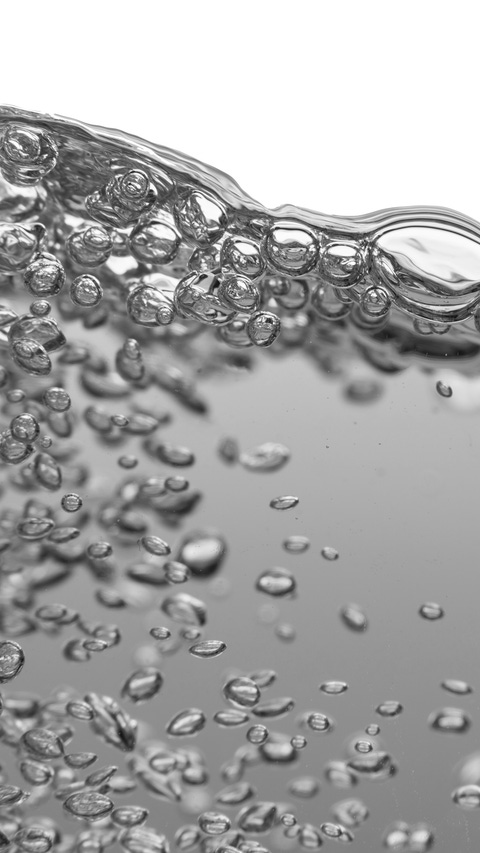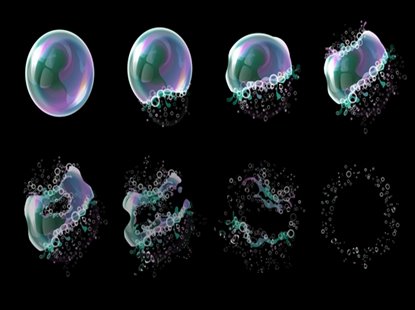How Defoamers Improve Performance in Production and Production

Recognizing Defoamers
Defoamers play an essential role in different making processes by effectively combating the development of foam, which can interfere with procedures and impact product high quality. Foam can develop in many contexts, such as throughout mixing, heating, or chain reactions, potentially causing inadequacies and incongruities in products. The system through which defoamers run usually includes lowering the surface area stress of the fluid, permitting bubbles to increase and coalesce to the surface more easily, where they can then break.
Defoamers are created from a range of chemical substances, consisting of natural products, silicones, and surfactants, each tailored to particular applications and procedures. The choice of defoamer depends on elements such as the kind of product being refined, temperature level, and the visibility of various other ingredients. Efficient defoamers not just lessen foam formation but also preserve compatibility with the product, making certain that there are no adverse results on the last outcome. Recognizing the properties and features of defoamers is vital for suppliers aiming to optimize their processes, boost performance, and keep the stability of their items.
Key Advantages of Defoamers
Utilizing defoamers in producing procedures provides a series of significant benefits that improve functional efficiency and item high quality. One of the primary advantages is the reduction of foam formation throughout production, which can obstruct equipment and interfere with process. By lessening foam, defoamers ensure smoother operations, causing lowered downtime and upkeep costs.
In addition, defoamers improve item consistency by preventing air entrapment, which can jeopardize the honesty of the end product. This is specifically crucial in industries where aesthetic appearance and appearance are essential, such as in paints, coverings, and foodstuff. Boosted product high quality not just meets client expectations yet additionally strengthens brand reputation.
Furthermore, defoamers can help in optimizing source usage. By enhancing the effectiveness of raw product usage, they contribute to set you back savings and decreased waste, straightening with sustainability objectives. The application of defoamers can lead to much shorter handling times, making it possible for manufacturers to boost manufacturing capability without substantial capital financial investment.
Applications in Numerous Industries
In producing processes across different sectors, the application of defoamers plays a critical function in enhancing performance and product top quality. These chemical ingredients are utilized in fields such as food and drink, drugs, and textiles to reduce foam-related difficulties.
In the food and drink industry, defoamers are vital during the fermentation process, stopping lathering that can interfere with production and spoil the item's integrity. In the pharmaceutical field, defoamers are utilized in the formulation of fluid medicines, making go to my site certain uniformity and stability while lessening waste.
Textile production additionally takes advantage of defoamers, as they are utilized in coloring and completing processes to promote even distribution of dyes and chemicals. This application not only boosts the last product's appearance yet likewise lowers the amount of water and energy taken in during manufacturing.
Additionally, in the paper and pulp sector, defoamers help preserve procedure efficiency by lowering foam that can hinder equipment performance. In general, the varied applications of defoamers throughout these industries underscore their value in maximizing production procedures and delivering top notch products.

Selecting the Right Defoamer
Choosing a proper defoamer is crucial for maximizing efficiency and high quality in manufacturing processes. The selection of defoamer depends upon numerous aspects, including the specific application, the kind of foam being created, and the formula of the product being made.

To start with, take into consideration the chemical compatibility of the defoamer with other active ingredients in your solution. A defoamer that engages negatively with other parts can negatively influence product high quality. In addition, the temperature level and pH range during processing are vital; some defoamers do ideally under particular conditions while ending up being inefficient in others.
Secondly, assess the defoamer's performance characteristics, such as its ability to swiftly decrease foam and its persistence throughout manufacturing. It is important to select a product that not only removes foam swiftly yet also keeps its performance in time.
Finally, take into consideration environmental her latest blog and regulatory variables, particularly if your production procedure undergoes stringent compliance requirements. Picking a biodegradable or low-toxicity defoamer can aid satisfy sustainability goals while ensuring functional efficiency. By attentively evaluating these criteria, producers can make enlightened decisions that improve performance and item stability.
Best Practices for Implementation
Effective execution of defoamers in manufacturing processes needs mindful preparation and adherence to best techniques. It's important to carry out a detailed assessment of the production atmosphere. This includes understanding the particular application, the kinds of lathering agents existing, and the functional problems. Picking the appropriate defoamer, as formerly talked about, is important; guarantee it is suitable with the materials entailed and attends to the identified foaming issues efficiently.
Following, preserve clear interaction with all stakeholders, consisting of drivers and top quality control teams. Educating sessions can aid make certain that everybody recognizes the application treatments, possible influences on product quality, and safety factors to consider. Executing a trial stage can additionally be helpful; screen performance very closely to assess effectiveness and make essential changes.
Furthermore, routine testing and tracking of foam levels can give useful insights right into the defoamer's performance with time. Changing dosages in action to changes in manufacturing variables will help keep ideal performance - defoamers. Recording all processes and results advertises continuous improvement, enabling for fine-tuning of defoamer usage and improving overall efficiency in making operations.
Final Thought
In recap, defoamers play a critical duty in boosting effectiveness within production and manufacturing processes. By reducing foam formation and facilitating bubble coalescence, defoamers contribute to enhanced item high quality, uniformity, and operational effectiveness. Their application across numerous markets emphasizes their convenience and value in maximizing source use and minimizing handling times. Inevitably, the calculated execution of defoamers makes it possible for manufacturers to raise manufacturing capacity efficiently, therefore meeting consumer assumptions and accomplishing price savings.
The benefits prolong to item quality and cost savings, as defoamers assist improve processes.Defoamers play a critical role in numerous producing procedures by effectively combating the development of foam, which can disrupt operations and impact look at here now item quality. Comprehending the properties and features of defoamers is crucial for manufacturers intending to enhance their procedures, boost productivity, and preserve the stability of their items.
Making use of defoamers in producing procedures provides a range of considerable benefits that improve functional effectiveness and item top quality.Furthermore, defoamers boost product consistency by stopping air entrapment, which can compromise the integrity of the last item.